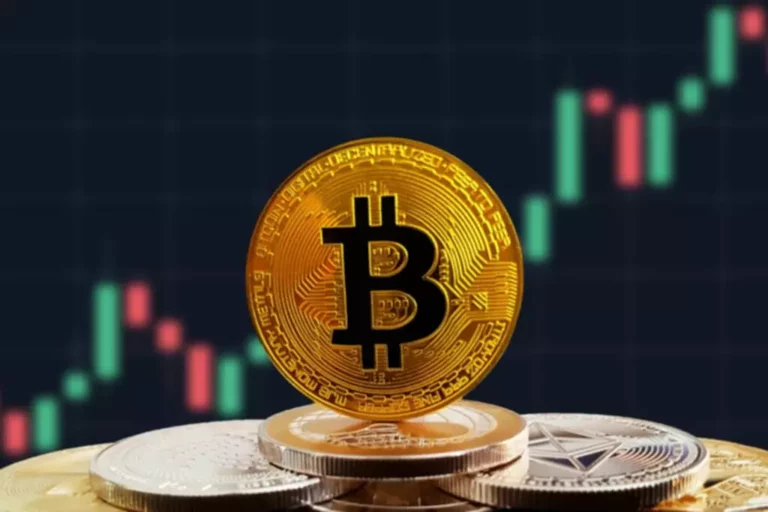Content
The last step is to claim or harvest the rewards earned from the liquidity pool. The safety of yield farming ranges, but if you stick with reputable providers and understand what you’re getting into, you should be able to manage the risks accordingly. In practice, the easiest way to start earning staking rewards is by staking through your exchange like Coinbase (COIN -1.63%). The exchange will take Stockbroker care of all the technical details and add any rewards you earn to your balance. If you can stomach the risk, yield farming can be an exciting way to earn yield on your crypto. However, you should conduct your own research and never invest more than you can afford to lose.
Bitcoin vs Bitcoin Cash: Which Cryptocurrency Is Better?
By doing this, their initial holding will be safe as they don’t use it and may increase in value over time. defi yield farming development company Meanwhile, at the same time, they earn interest from their borrowed coins. “Farmers” have been buying into Compound (COMP), an Ethereum (ERC-20) digital asset that powers the Compound protocol. In order to acquire a yield on Compound, the user must deposit collateral, which can be in Ether (ETH) or any ERC-20 token that Compound supports.
Yield Farming: The Truth About This Crypto Investment Strategy
Each of these dApps is powered by smart contracts which allow for the autonomous execution of transactions without any central bank or intermediaries. Protocols that have followed the liquidity mining model include a wide range of applications, from decentralized exchanges to money https://www.xcritical.com/ markets, yield aggregators, and beyond. These projects have benefited from creating a network of early users who actively bootstrap the project’s liquidity and participate in the protocol’s governance.
How DeFi yield farming is similar to and different from traditional investment methods
Yield farmers look to DeFi for unparalleled investment opportunities in which to park assets and maximize yields. Emerging DeFi projects look to yield farmers to help bolster platforms and to provide liquidity crucial to nascent projects. We expect this enterprising sector to rapidly innovate and define creative rewards pathways within DeFi.
Understanding Staking in Cryptocurrency
- Periodically review the yield farming strategy based on performance and market conditions.
- By locking up otherwise idle cryptocurrencies into DeFi lending and liquidity protocols, investors can generate income through interest, fees and token rewards.
- The preferred strategy depends on variables like liquidity needs, targeted income, risk tolerance and investment timeline.
- Instead of leaving her funds in the balance, she searches for a DeFi application with a yield farming application and ends up depositing the ETH there.
- These liquidity pools are smart contracts that hold a number of cryptocurrencies as staked by the individual owners.
- Demand for the token (heightened by the way its automatic distribution was structured) kicked off the present craze and moved Compound into the leading position in DeFi at the time.
- These are two tokens (both stablecoins but with different mechanisms for retaining their value) that are meant to be worth $1 each all the time, and that generally tends to be true for both.
Please note that security and privacy policies may differ from our policies, so please read third-party privacy and security policies closely. The inclusion of any link does not imply our endorsement or our adoption of the statements therein and is only provided for your convenience. The workshop will provide you with a deeper understanding of DeFi, enabling you to prepare for DeFi’s evolution, participate in the DeFi ecosystem, and also contribute to the growth of DeFi. LiteFinance Global LLC does not provide services to residents of the EEA countries, USA, Israel, Russia, and some other countries. This website contains links to third-party sites that are not under the control of Chainalysis, Inc. or its affiliates (collectively “Chainalysis”). The comments, opinions, and analyses expressed on Investopedia are for informational purposes only.

A yield crypto farmer also stakes their cryptocurrencies in specific DeFi protocols to earn additional income. Cryptocurrency through a smart contract to support protocol stability or network operations. The last way we’ll discuss is becoming a liquidity provider for a decentralized exchange — such as Uniswap (UNI 4.66%) or Pancakeswap (CAKE 0.0%). Providing a pair of crypto tokens in equal amounts to a decentralized exchange allows it to perform swaps for investors looking to exchange one cryptocurrency for another.

Examples of dApps include crypto wallets, DEXs, decentralized social media and more. Some commonly used metrics are Annual Percentage Rate (APR) and Annual Percentage Yield (APY). The difference between them is that APR doesn’t take into account the effect of compounding, while APY does. Compounding, in this case, is the reinvestment of earnings back into the protocol to generate more returns.
Some malicious hacker who didn’t like EOS created a token called EIDOS on the network in late 2019. It rewarded people for tons of pointless transactions and somehow got an exchange listing. No, but it was the most-used protocol with the most carefully designed liquidity mining scheme. It is a fair bet many of the more well-known DeFi projects will announce some kind of coin that can be mined by providing liquidity. Users making big bets on these products turn to companies Opyn and Nexus Mutual to insure their positions because there’s no government protections in this nascent space – more on the ample risks later on.
It remains to be seen how yield farming will change and evolve into the future, and whether current forms of yield farming will sustain long-term growth. A subset of DeFi protocols have attempted to improve upon the original designs of liquidity mining, a wave of innovation commonly referred to as DeFi 2.0. A primary focus of DeFi 2.0 protocols is to overcome long-term liquidity limitations through increasingly sophisticated liquidity incentivization models and incentive alignment. Yield farming is generally more about maximizing returns on idle assets than this, through a complex set of strategies and hopping from platform to platform. It would be like a savvy investor moving money through high-yield savings accounts to chase the best-prevailing interest rates. Yield farming offers greater profit potential through optimized strategies across DeFi protocols, while staking provides lower but steady yields for securing networks.

Interest can be either fixed or variable with the rates decided by the individual platform. Compound rewards users with its native token “Comp” for example, along with the interest payment. Yield farming promotes financial inclusion by allowing anyone with an internet connection and cryptocurrency to participate in the DeFi revolution.
Prospective yield farmers should prepare for the potential of total loss before getting started. But those who successfully navigate the risks sometimes secure returns higher than those offered at a bank. Regardless of the type of staking, crypto staking is a lot less complicated than yield farming, making it the more user-friendly method of earning rewards paid in tokens. Popular and trusted protocols include Curve, Aave, Balancer, Compound, and Uniswap.
Most high-reward strategies — both in traditional financial markets and cryptocurrency markets — come with high risk. Below, we’ll explore some of the risks of yield farming, including smart contract vulnerabilities, impermanent loss on returns, and market volatility. While the yield farming process varies from protocol to protocol, it generally involves liquidity providers, also called yield farmers, depositing tokens in a DeFi application.
This kind of asset is called a governance token, and it offers holders voting rights that give them power over platform changes. Interest in the token jump-started its popularity and moved Compound into the leading position in DeFi. In both cases, however, potential returns are highly volatile because rewards are paid out in crypto tokens that are subject to market price fluctuations.
